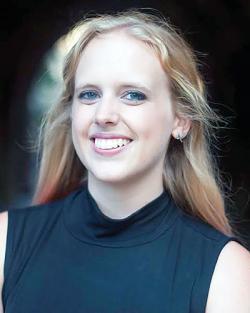Savannah Thais
Fall
2020
Alumni Spotlight
Savannah Thais
BA, Physics and Mathematics, University of Chicago
 What she does
What she does
I’m a postdoc at Princeton University, where I primarily work on physics-informed machine learning (ML). Right now I’m developing accelerated ML-based reconstruction algorithms for the High-Luminosity Large Hadron Collider (LHC). I’m really interested in understanding the underlying scientific theory of machine learning, why certain algorithms work best for certain problems, and how the constraints of physical systems can help us answer these questions. I also work on some AI for social good projects, right now focusing on public health advocacy in at-risk communities.
How she got there
I received my undergraduate degree in math and physics at the University of Chicago and always dreamed of working at the LHC. I got my first research position there working for Young-Kee Kim, chair of the physics department at UChicago, who was a huge inspiration for me; she does incredible work in experimental particle physics and accelerator physics and is indefatigable.
I kind of stumbled into ML during my PhD at Yale, and it became my passion. I enjoyed my “service task” for the ATLAS experiment—building an electron identification algorithm—much more than my physics analysis work and realized that that was the area I wanted to focus on. My two advisors during grad school, Keith Baker and Sarah Demers, were instrumental in my success. They supported my ideas and helped me become a researcher I was proud of. I also am incredibly grateful to my dear friend and “academic big sister,” Michela Paganini, who went out of her way to include me in ML discussions and introduce me to key players. As I got more involved in the ML space, I started to see more how this technology can be misused and can actually harm communities, and that became an additional focus of my work and advocacy. Generally, I’m inspired by folks who are motivated by good science and societal good.
Responding to the COVID-19 pandemic
We started Science Responds quite early in the pandemic. I had already been following a few researchers who were talking about ways to use data science to encourage good public health practices, support communities, and better understand the pandemic. My boss, Peter Elmer, reached out to me and some of our colleagues to see if we’d be interested in forming a collaboration to enable scientific researchers to best use their technical skills to combat the pandemic, and Science Responds was born. Within Science Responds I have primarily focused on data science and ML projects. We provide a central hub where interested volunteers can find projects to join and resources to support existing projects. We’ve also hosted various meetings and discussions to share best practices for reopening labs, hosting virtual conferences, collaborating remotely, and more. Through Science Responds I started COVID Community Vulnerability Index, which provides governments and nonprofits with a science-backed, multiaxis, quantitative community-needs assessment tool that incorporates COVID-specific information and effects. I have a great team working on this project now, and we’re beginning to develop direct partnerships with national nonprofits and other research organizations.
The importance of science education and outreach
Science and technology affect nearly every aspect of our daily lives, and I believe we have a duty as scientists to ensure everyone is able to make informed decisions about these issues. Science education and outreach is a form of empowerment and something we should all invest in. Additionally, education and outreach help make science accessible; allowing folks to see themselves as scientists and become invested in the process fosters diversity and vibrancy in science!
Advice to physics students
My advice is to take every opportunity you can and pursue your passions! There is so much more to being a good scientist, and especially a good science educator, than laboratory or data skills (although these things are very important as well!). Don’t limit yourself or let others dictate what is useful for you to spend your time on. Some of the experiences that have served me best in my career so far have come from being active in student government, my college sorority, and other program management opportunities. Most importantly, if you want to do effective education and outreach, you must invest in and understand the communities you’re trying to serve.
I hope we as a field keep redefining what it means to be a scientist. We have to support diversity and inclusion efforts across all axes: gender, race, disability, mental health, origins, etc. Doing good in the world and doing good science don’t have to be incompatible goals.
Get Involved
Science Responds is an evolving community of scientists exploring ways to contribute to the COVID-19 response through physics-related applications, data analytics, machine learning, simulation, software, computing, and hardware development. The group is also examining how research activities can be adapted during the pandemic and developing ideas for new approaches based on lessons learned. The website (science-responds.org/) provides a collection of useful resources—including datasets, articles, and papers—plus a database of existing projects. Anyone can request the addition of a project via the email link on the home page.
To get involved in the conversation, join the Science Responds discussion on Slack (link on the home page, under “Join Us”). You can contribute resources directly to the website via GitHub. Instructions and a list of specific resources requested (such as project ideas, links, and primers) are available here: science-responds.org/about/contribute/.
